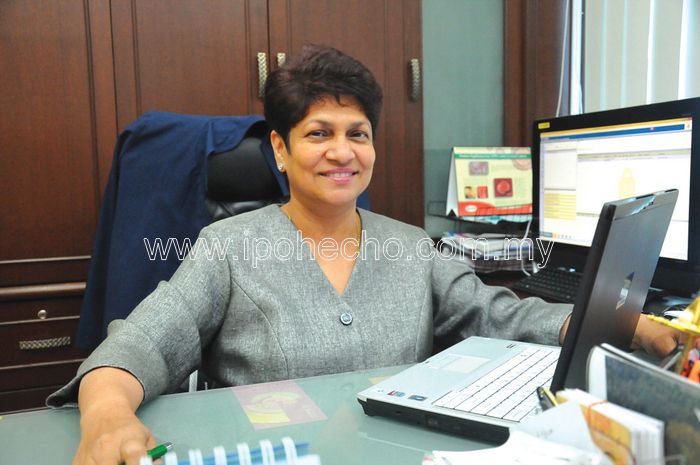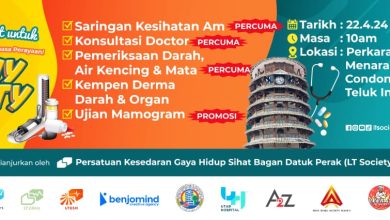

Wellness
Dr Usha Devy Athithan, a Consultant Obstetrician and Gynaecologist and no stranger to Ipoh, has worked as an O&G Specialist in KPJ Ipoh Specialist Hospital since 1994. Dr Usha was previously attached to several hospitals including Pulau Pinang Hospital, Kuala Lumpur Hospital, UKM, Leicester Royal Infirmary in the United Kingdom and Hospital Raja Permaisuri Bainun in Ipoh. She wants more women to be aware and be informed about Endometriosis, the condition she refers to as the bane of the modern woman.
She views the trend in the disease being increasingly detected in younger age groups worrying and says “Endometriosis used to be commonly detected in women aged between late 20s and 40s but now the patients diagnosed with endometriosis are younger. In fact, I recently had a patient aged 15 with the condition”, she shared.
While many Malaysian women are unaware of this condition, Dr Usha explained that Endometriosis is one of the most common gynaecological problems. ”It occurs when endometrial tissue that normally lines the uterus, is found outside the womb. The common sites are the ovaries, fallopian tubes and the ligaments that support the uterus and other possible sites, such as the bladder, bowel and vagina,” she clarified.
When asked for the causes of the disease, she acknowledged that Endometriosis is one of the most puzzling diseases, often referred to as a “disease of theories”. Amongst the speculated theories, and most commonly accepted, are retrograde menstruation (when some menstrual fluid flows backward into the fallopian tubes rather than into the vagina), presence of ectopic endometrial tissue at birth or a combination of both theories, she emphasised.
She revealed that about 10 to 20 per cent of the female population are actually affected and the common symptoms are severe pain before and during menstruation, pain during sexual intercourse, heavy and irregular bleeding, intensified cramps during bowel movements (especially during menses) and infertility.
“This is why it’s the bane of the modern woman because nowadays, women are getting married later and having children later too and Endometriosis is a very common cause of female infertility,” she said. In fact many a time endometriosis is diagnosed when the patient comes seeking treatment for infertility.
How do you diagnose Endometriosis? The answer is through a procedure called laparoscopy (key hole surgery). Laparoscopy must be done to confirm when the clinical index of suspicion is high. Once it is confirmed, treatment will be administered and it can be through surgery, hormonal or anti hormonal therapy.
The hallmark of treatment would be to provide pain relief, halt the progression of disease, restoring fertility and preserving reproductive function for the future.
The approach to treatment would be determined by the patient’s age, her desire to conceive and stage of the disease. There are medical and surgical treatment options. Surgical options are conservative or non-conservative.
The mainstay of medical treatment is to stop menstruation i.e. to create a pseudo pregnancy or pseudo menopause state. These include the use of oral contraceptive pills, progestogen choices, Danazol and injections which are GnRh analogues. These are not without side effects amongst which are weight gain, hirsutism, acne, voice change and osteoporosis of the bones.
“Conservative surgery is designed to preserve the ability of a woman to become pregnant and bear children in future. It focuses on removing individual foci of Endometriosis and clearance of adhesions which the gynaecologist accomplishes through the use of laparoscopy.”
“Non-conservative surgery provides sustained relief for Endometriosis where it includes removal of the uterus and both fallopian tubes and ovaries (total hysterectomy with bilateral salpingo oophorectomy). These methods may prevent the recurrence of Endometriosis, but they also leave the patient unable to bear children and in a permanent state of menopause. However, this measure is undertaken only to relieve a woman of severe pain after all other options have failed, and she is beyond child bearing age,” Dr Usha clarified.
Dr Usha stressed that the best decision is an informed decision as endometriosis affects different women differently. “A woman must know what she wants and the options available to her. She can then make her choice with the advice from her gynaecologist”.
To those women wishing to conceive and who do not get pregnant after six months of trying and have symptoms of endometriosis, Dr Usha advises them to seek gynaecological attention early.
“Please don’t think it’s normal to have painful periods, and the other symptoms stated above. Don’t just dismiss it and accept it. The strange thing about Endometriosis is that the severity of the disease is not an indication of fertility. Age is an important factor. Since the biological clock is ticking away, women must seek consultation early. Addressing the problem earlier will ensure a higher chance of pregnancy,” she advised.
Dr Usha Devy Athithan Consultant Obstetrician & GynaecologistSuite No 1-15 KPJ Ipoh Specialist Hospital
Jalan Raja DiHilir, 30350 Ipoh, Perak
+605 240 8777 ext 8515/8516 +605 255 8515 Nabilah Hamudin


